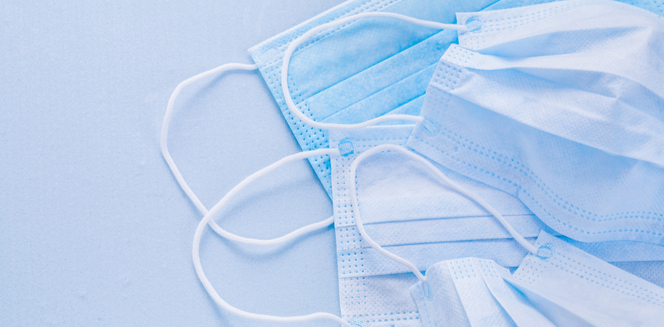Healthcare Fabrics Play an Important Role in the Medical Sector – Explore How

15 Jul
2021
With a wide array of usage in various applications, fabrics are considered to be versatile indeed. It has been one of the most crucial key components in our daily life. Fabrics are not only used for clothing purposes but also for military uses, agricultural drives, and of course in several healthcare applications.
There are two categories of fabrics available in the market. One is the natural fabric such as cotton, silk and wool, which are commonly produced from animal or plant based fibers and the other one is synthetic or man-made fabric which is scientifically invented and entirely manufactured from chemicals like acids & alcohols. Over the past few years, the usage of synthetic fabrics has progressively grown in popularity across the world. Almost all the healthcare fabrics are made up of synthetic fibers because of their exceptional durability and lesser chance of biodegradability.
Purpose, usage and production of healthcare fabrics:-
In the healthcare industry, fabrics are used in things like mattresses, bed sheets and pillow cases, medical curtains, hospital gowns, sanitary napkins, surgical gloves, bandages, face masks etc. The healthcare fabrics are water proof and highly flexible, which is why, they are on high demand in the market. These medical fabrics are manufactured with antimicrobial features, which is a special coating used to prevent the forming of microbes on the fabric surface. An antimicrobial fabric can be any textile that provides protection against bacteria, mold, mildew, and other dangerous microbes.
Thus, it is very important to have an antimicrobial and antistatic fabric in order to maintain a safe environment in the hospital. In addition, the medical fabrics should be strong, durable, non- allergic, mildew & mold resistance, moisture & vapor transmission resistant, flame resistant, stain, odor and fluid resistant etc. that can lessen the chances of infections for the patients.
Moreover, the main goal of healthcare fabrics is to reduce the risk of blood contamination and transmission of pathogens within the body, which in turn, offers protection to healthcare practitioners against any infection. The synthetic raw materials like cotton, polypropylene, polyester, polyamide, viscose etc. can be used to produce these medical fibers. Polypropylene and polyester have the largest share in the healthcare fabrics market as of now. These are extremely resistant to stretching and shrinking, which is why, they are used in the top sheet of hygiene products such as sanitary napkins and baby wraps, while making them extremely comfortable for consumer’s usage.
Also, the quantity and size of the pores in the end-use products should be very specific, since it determines the biodegradability of the material while also impacting the reactions of blood and tissues in the human body. Â Furthermore, certain devices such as an artificial liver or an artificial kidney which works as a dialyzer, are also made up of advanced fabrics.
Reasons for the growth of the global healthcare fabrics market:-
In the present scenario, the healthcare fabrics market is the fastest growing sector in the medical textile industry. The factors like ageing population, rise in the number of diseases and infections in the world, and advancements in technology are extensively supporting the growth of the healthcare fabrics market.
According to a report published by Allied Market Research, the healthcare fabric market size is estimated to register a significant CAGR from 2016-2022. Mostly in the developing & highly populated countries like India and China, the rise in the number of hospitals along with the medical and healthcare facilities have boosted the market of healthcare fabrics to a great extent.
Currently, the outbreak of the COVID-19 pandemic has led to rapid increase of patient inflow, which in turn, has bombarded with huge demand for healthcare fabrics used in PPE kits, bed sheets, masks, and some other essential items in the consumer segment. Owing to these facts, the demand for healthcare fabrics is anticipated to increase even in the post pandemic period. Moreover, the government as well as the private sectors across the world are constantly trying to set up new laboratories for further innovations in the field of healthcare fabrics. With this drift on board, the global healthcare fabric market is expected to grow exponentially in the upcoming years.

Koyel Ghosh
Author’s Bio- Koyel Ghosh is a blogger with a strong passion and enjoys writing in miscellaneous domains, as she believes it lets her explore a wide variety of niches. She has an innate interest in creativity and enjoys experimenting with different writing styles. A writer who never stops imagining, she has been serving the corporate industry for the last five years.
Avenue: Entire Library membership of Allied Market Research Reports at your disposal
- Avenue is an innovative subscription-based online report database.
- Avail an online access to the entire library of syndicated reports on more than 2,000 niche industries and company profiles on more than 12,000 firms across 11 domains.
- A cost-effective model tailored for entrepreneurs, investors, and students & researchers at universities.
- Request customizations, suggest new reports, and avail analyst support as per your requirements.
- Get an access to the library of reports at any time from any device and anywhere.
Related Post
-
How are Submarine Cables Transforming Global Connectivity with Enhanced User Experience?
-
Endoscopy Procedures: Transformations in Techniques and Applications
-
AI-Powered Video Analytics: How the Product Actually Works for enterprises
-
Painting Robots: Transforming Precision Coating and Creative Applications
-
Innovations in Pharmacovigilance Systems Advancing Patient Safety
-
Understanding Edge Security: Keeping Data Safe Near the Source
-
Exploring the Use and Advancements of 3D Laser Scanners in Professional Applications
-
Reinforcing Industrial Controls with Smarter Tools and Training








